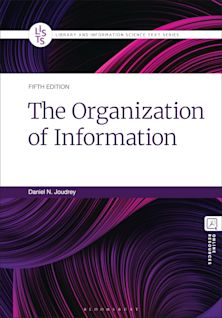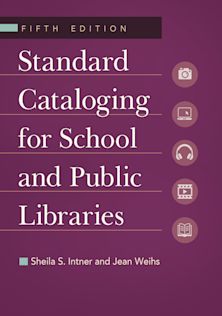- Home
- ACADEMIC
- Library & Information Science
- Cataloging and Classification
- Understanding FRBR
This product is usually dispatched within 2-4 weeks
- Delivery and returns info
-
Flat rate of $10.00 for shipping anywhere in Australia
You must sign in to add this item to your wishlist. Please sign in or create an account
Description
What is FRBR, and why is everyone talking about it? Is it really going to revolutionize cataloguing? And if so, what form will it take? This book is written for librarians, bibliographic systems designers, library and information science faculty and students, and anyone else who is interested in learning about the Functional Requirements for Bibliographic Records (FRBR) and how following the FRBR model can improve access to information through helpful organization of the metadata records that are surrogates for information resources. Serials, art, music, moving images, maps, and archival materials are just a few of the formats covered. Not for catalogers only!
Table of Contents
Chapter 1: An Introduction to Functional Requirements for Bibliographic Records (FRBR) by Arlene G. Taylor
Chapter 2: An Introduction to Functional Requirements for Authority Data (FRAD) by Glenn E. Patton
Chapter 3: Understanding the Relationship between FRBR and FRAD by Glenn E. Patton
Chapter 4: FRBR and the History of Cataloging by William Denton
Chapter 5: The Impact of Research on the Development of FRBR by Edward T. O'Neill
Chapter 6: Bibliographic Families and Superworks by Richard P. Smiraglia
Chapter 7: FRBR and RDA (Resource Description and Access) by Barbara B. Tillett
Chapter 8: FRBR and Archival Materials by Alexander C. Thurman
Chapter 9: FRBR and Works of Art, Architecture, and Material Culture by Martha Baca and Sherman Clarke
Chapter 10: FRBR and Cartographic Materials by Mary Lynette Larsgaard
Chapter 11: FRBR and Moving Image Materials by Martha M. Yee
Chapter 12: FRBR and Music by Sherry L. Vellucci
Chapter 13: FRBR and Serials by Steven C. Shadle
Index
About the Editor and Contributors
Product details
| Published | 30 Nov 2007 |
|---|---|
| Format | Paperback |
| Edition | 1st |
| Extent | 192 |
| ISBN | 9781591585091 |
| Imprint | Libraries Unlimited |
| Dimensions | 254 x 178 mm |
| Publisher | Bloomsbury Publishing |
About the contributors
Reviews
-
Understanding FRBR. . . features chapters contributed by leading authorities in the cataloging field. . . . It offers a basic introduction to FRBR, discussions about FRBR, FRAD (functional requirements for authority data), and RDA (resource description and access), and the issues involved in using FRBR in nontraditional library settings such as with cartographic materials and music. Both books are well illustrated and include numerous bibliographical resources.' [Reviewed in conjuntion with FRBR: A Guide for the Perplexed].
Library Journal
-
Understanding FRBR is clearly written, well illustrated (many of the concepts are clarified by very helpful diagrams), and well indexed; additionally, chapters feature extensive bibliographies, many of which provide URLs to the IFLA groups' documents. While it may seem that this book is of interest only to catalogers, the application of FRBR will change the structure of catalog and the systems used to store and display it; therefore, it is an important text for systems librarians, reference librarians, and anybody else interested in the future of the organization and display of bibliographic information.
College & Research Libraries
-
The emergence of this textbook is testimony to the breadth and depth of work done to date. It documents much of that work, and provides a good basic introduction to FRBR that is broadly understandable. . . . The relational concepts within FRBR are complicated and can be challenging. This book does a good job of illuminating them in a straightforward manner. It also describes how the application of the FRBR concepts could improve our systems of bibliographic access in very specific ways. . . . For those of us that really want or need to be able to predict the impact that FRBR will have on our work, this is an accessible explanation of the current state of the art. As such it is a real contribution to our understanding.
TechKNOW
-
Taylor and her contributors cover FRBR and introduce the reader to FRAD as well. . . . All chapters conclude with current and useful references to further reading and more information.
Booklist
-
Arlene Taylor and her compadres don't even try to teach you how to construct a hierarchical record. Instead, they direct their efforts toward showcasing what's possible when digital technology and traditional cataloging practice meet. This is the future of cataloging.
Library Media Connection
-
Understanding FRBR is a useful and timely book that brings together recent developments in FRBR and offers several assessments of it.
Technicalities



































